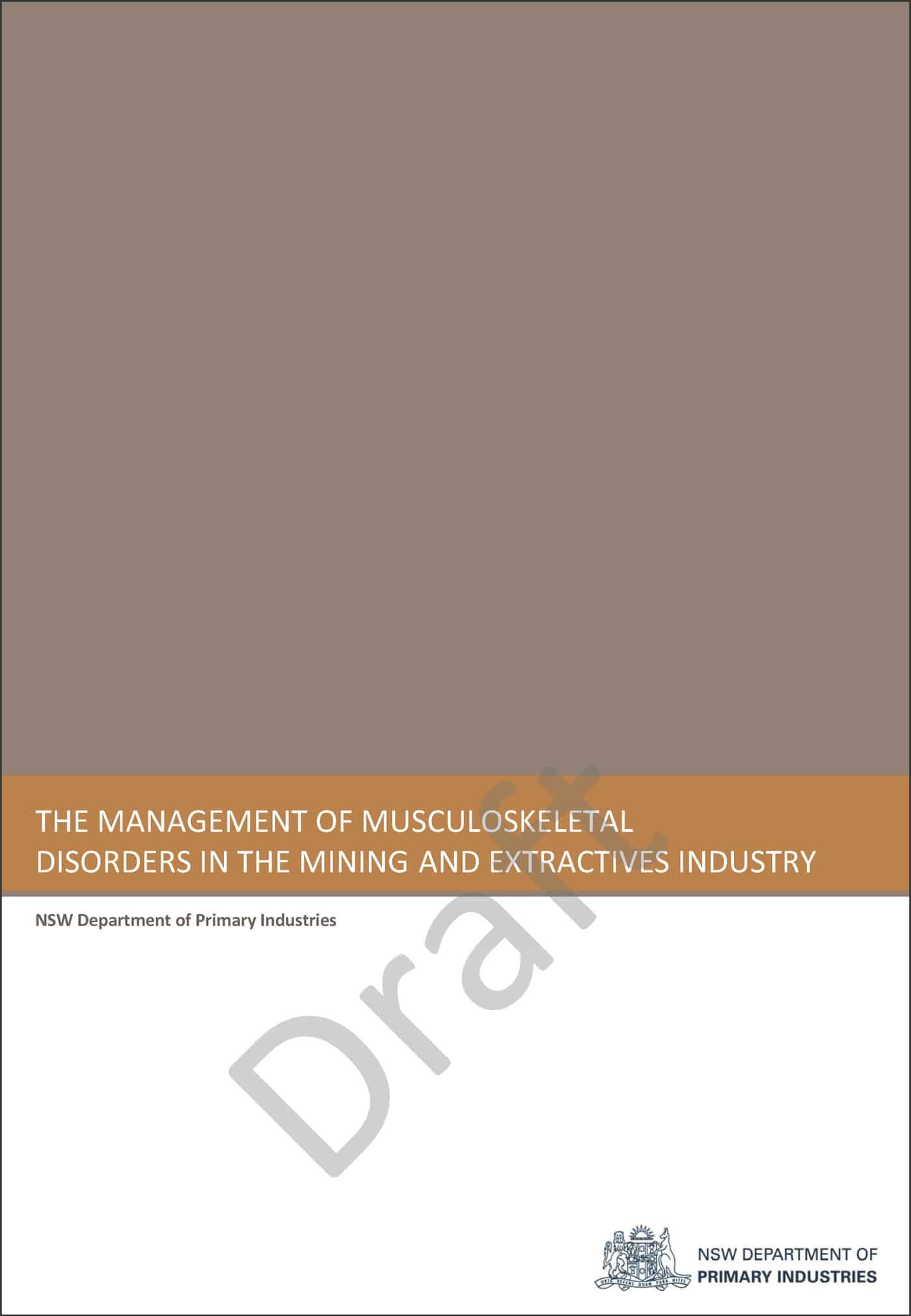Any inquiry into musculoskeletal disorders (MSD) in any industry is of great interest to OHS professionals as MSD are the bane of the profession.
The New South Wales Dept of Primary Industries (DPI) is requesting public comment on a new MSD guidance for the mining and extractive industries. Below is some text from the media release
Industry comment is being sought by the Musculoskeletal Disorders (MSD) Working Party on the guidance document The Management of Musculoskeletal Disorders in the Mining and Extractives Industry.
The benefits of the guide are that it;
• Facilitates sites taking planned preventative measures;
• Uses the capacities that already exist and;
• Provides effective tools for sites to use.
Comments are welcome on the guidance through the DPI website by close of business 27 March 2009.


